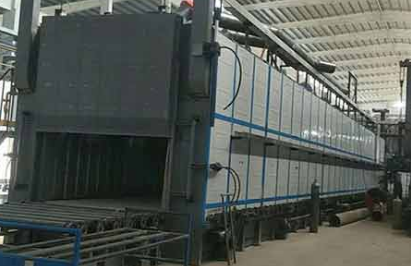
Application of Ceramic Fiber Blankets in Industrial Furnace Insulation
Ceramic fiber blankets are widely used in industrial furnace insulation due to their exceptional thermal and physical properties. Made from high-purity alumina-silica fibers, these blankets offer lightweight, flexible, and highly effective thermal insulation solutions in environments with extreme temperatures.
Key Properties
High Temperature Resistance: Ceramic fiber blankets can typically withstand continuous temperatures up to 1260°C (2300°F), with some advanced grades rated up to 1430°C (2600°F).
Low Thermal Conductivity: Their low thermal conductivity minimizes heat loss, improving energy efficiency and reducing operating costs.
Thermal Shock Resistance: They maintain structural integrity under rapid temperature changes, making them ideal for cyclic heating processes.
Chemical Stability: Resistant to most chemicals except strong acids and alkalis, ensuring durability in harsh industrial environments.
Applications in Industrial Furnaces
Lining Material: Ceramic fiber blankets serve as lining material for various types of furnaces such as:
Heat treatment furnaces
Reheating furnaces
Forging furnaces
Tunnel kilns and ceramic kilns
Backup Insulation: Used in combination with refractory bricks or castables to provide layered insulation, enhancing thermal performance and reducing external surface temperatures.
Expansion Joints & Seals: Their flexibility makes them suitable for sealing gaps or lining irregular shapes in furnace structures.
Furnace Door and Cover Insulation: Due to their lightweight and easy handling, they are commonly used to insulate furnace doors and removable covers.
Benefits
Energy Savings: Improved insulation leads to lower fuel consumption.
Lightweight Construction: Reduces the load on the furnace structure and simplifies installation and maintenance.
Long Service Life: With proper installation, ceramic fiber blankets offer durable and reliable performance under harsh conditions.
Conclusion
Ceramic fiber blankets play a critical role in enhancing the efficiency, safety, and longevity of industrial furnaces. Their unique combination of thermal insulation, resistance to high temperatures, and mechanical flexibility makes them an essential material in modern industrial thermal management.